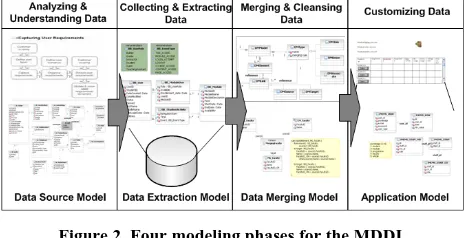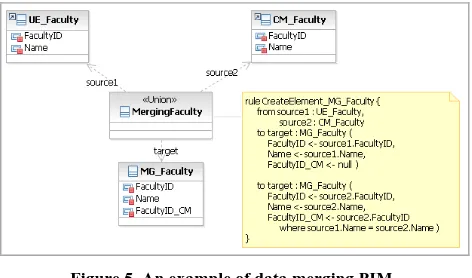A case study on model driven data integration for data centric software development
Full text
Figure




Related documents
Processes that are mandated by the certification standards divide software development into several phases according to which the related documents are created (requirements
SOURCES INTO THE INTEGRATION DATA STRUCTURE OF ONDEX (DATA INPUT IN GREEN), 2) LINKING OF EQUIVALENT OR RELATED ENTITIES OF THE DIFFERENT DATA SOURCES (DATA INTEGRATION IN YELLOW
Moreover, users often want to ask their analytical ques- tions over multiple data sources. However, the task of set- ting up data for integration is orthogonal to the analysis task
The cause of the extra code in the data layer of the original implementation is that it has to adapt between behavior-less Transfer Objects used by the persistence framework
activities through a semantic information integration pipeline to ingest real-time data from sensors and dynamic data sources; a secure repository for researchers and
That is, looking at the development process, besides a spine of model transformations moving from highly abstract, do- main related models down to concrete platform related
The integration of biologically-based omic data sources and the subsequent selection of factors using automated learning techniques improve the understanding and identification
The WHIPS prototype focuses on the data integration component. It identifies the data changes at the heterogeneous sources, transforms them, summarizes them,